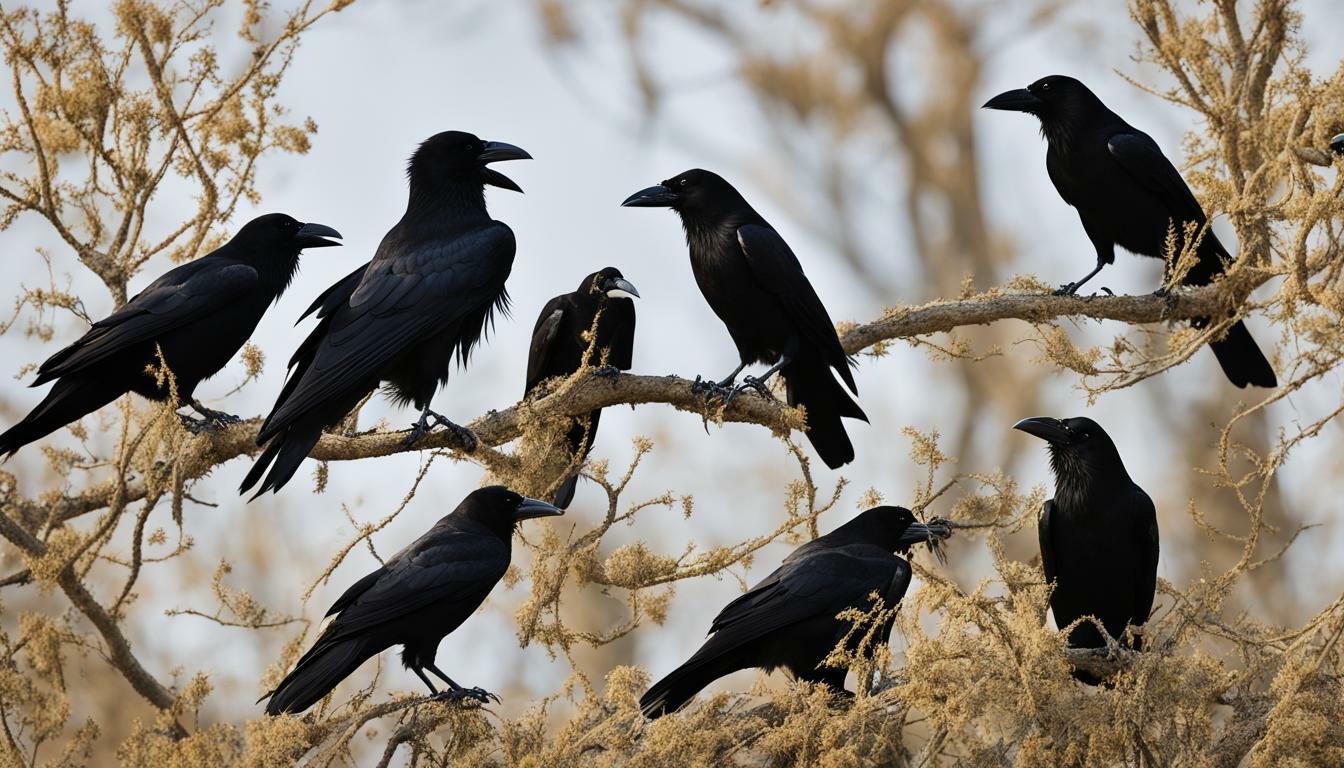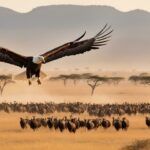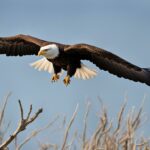Have you ever wondered whether crows eat other birds? These intelligent birds have a reputation for being scavengers and opportunistic feeders. But what about bird predation? In this article, we take a closer look at crow eating habits and explore their dietary preferences when it comes to consuming other birds.
Crows are found all over the United States and are an important part of the avian food chain. They are known for their omnivorous diet, which includes everything from fruits and seeds to insects and small mammals. But what about other birds?
Key Takeaways:
- Crows are known for their omnivorous diet, but they also have a predatory streak.
- Crows are opportunistic feeders and will consume a variety of bird species.
- Crow predation plays an important role in balancing ecosystems and controlling certain bird populations.
Crow Feeding Habits and Predatory Behavior
When it comes to bird predation, crows are one of the most notorious species. Their predatory behavior is well-documented, with studies showing that crows have been observed feeding on over 250 different bird species. Crow predation patterns vary based on region, season, and the availability of prey.
Crows are opportunistic feeders and will eat whatever prey is available, but they do have specific feeding habits. They are known to prey on smaller bird species such as sparrows, finches, and warblers, but they have also been known to attack and eat larger birds such as pigeons and doves.
| Bird Prey of Crows | Crow Feeding Habits |
|---|---|
| Sparrows | Crows will often attack sparrows in suburban and urban areas where they are abundant. |
| Finches and Warblers | Crows are known to prey upon these species during migration seasons when they are passing through open areas. |
| Pigeons and Doves | Crows will sometimes attack and kill larger birds like pigeons and doves. Studies suggest that this behavior is more prevalent in urban areas where these birds are common. |
Crow predation patterns are influenced by many factors, including habitat, migration patterns, and population density. In urban areas, crows have access to a wide variety of food sources, which may increase their predatory behavior. In contrast, in more rural areas, crows may have fewer options and may be more selective in their feeding habits.
Understanding crow feeding habits and predatory behavior is an important part of wildlife conservation efforts. While crows are essential to balancing ecosystems and controlling certain bird populations, their predatory behavior can also have a significant impact on other species. Conservationists work to find a balance between preserving bird populations and protecting the vital role that crows play in our environment.
Understanding Crow Dietary Preferences
When it comes to consuming other birds, crows have distinct dietary preferences. Their choices of prey can depend on a variety of factors, including availability, competition, and nutritional value.
Crows are known to select smaller bird species for their diet, such as sparrows and warblers. However, they have also been observed preying on larger birds, such as ducks and even raptors. These larger bird species may be seen as a competition for resources, or may simply be a matter of opportunity.
In terms of the avian food chain, crows are considered opportunistic predators. This means they will eat whatever prey is available to them, including other birds. Crows are often seen as mid-level predators, as they prey on a variety of smaller species while also being preyed upon by larger predators.
Crow dietary preferences may also vary across different regions of the United States. For example, coastal crows may have a diet that includes more marine prey, while inland crows may rely more heavily on land-based prey.
Overall, understanding crow dietary preferences is crucial in understanding their role in the avian food chain and their impact on bird populations.
Crow Predation and its Impact on Bird Populations
While crows are known to be opportunistic feeders, their predation patterns can have a significant impact on bird populations. Crows have been observed preying on a variety of bird species, including smaller birds like sparrows and finches, as well as larger birds like pigeons and doves.
The extent to which crows prey on other birds can vary depending on a number of factors. For example, in areas where crows have no natural predators, they may become more aggressive in their hunting habits and have a greater impact on local bird populations. Additionally, habitat loss and climate change can also influence the number of birds available as prey for crows.
| Bird Species Preyed Upon by Crows | Impact on Bird Populations |
|---|---|
| Sparrows, Finches, and other small birds | Can significantly impact local populations, especially in areas with no natural predators for crows. |
| Pigeons, Doves, and other larger birds | May have a lesser impact on populations due to their size and ability to defend themselves. |
Despite the potential impact on bird populations, crows also play an important role in balancing ecosystems. By controlling certain bird species, they help maintain a healthy avian food chain. However, it is important to ensure that crow predation does not become unbalanced and threaten the survival of certain bird species.
Conservation efforts have been implemented in some areas to help mitigate the impact of crow predation on bird populations. These efforts include limiting the use of pesticides, providing nesting boxes for smaller bird species, and creating habitat corridors to help maintain healthy bird populations.
Overall, while crows are known to prey on other birds, their impact on bird populations can vary depending on a number of factors. It is important to strike a balance between maintaining healthy ecosystems and ensuring the survival of all bird species.
Conclusion
After delving deep into the topic of whether crows eat other birds, we can conclude that the answer is yes. Crows are known for their predatory behavior, and they do consume a variety of bird species as part of their diet.
However, crows are not indiscriminate killers. They are selective about the birds they target and often play a role in balancing ecosystems by controlling certain bird populations. Understanding the dietary preferences and predation patterns of crows is crucial to conservation efforts and maintaining healthy bird populations.
While the idea of crows preying on other birds may be unsettling to some, it is a natural part of their role in the avian food chain. By studying and sharing knowledge about crow behavior and bird predation, we can better appreciate the intricacies of the natural world around us.
Are Mice Part of the Diet of Crows?
Crows’ dietary habits: mice consumption explored. Crows are known to be highly adaptable when it comes to their diet. While their primary food sources consist of insects, fruits, grains, and small animals like lizards and frogs, mice are indeed a part of their diet. As opportunistic scavengers, crows will not hesitate to consume mice when available, showcasing their versatile and resourceful feeding behaviors.
FAQ
Q: Do crows eat other birds?
A: Yes, crows are known to eat other birds as part of their dietary habits.
Q: What types of birds do crows prey upon?
A: Crows have been observed preying upon smaller bird species, as well as occasionally posing threats to larger birds.
Q: What factors influence crow predation patterns?
A: Various factors can influence crow predation patterns, including availability of prey, habitat, and competition with other bird species.
Q: Why do crows choose certain bird species as prey?
A: Crows may choose certain bird species as prey based on their dietary preferences, adaptability, and hunting strategies.
Q: How does crow predation impact bird populations?
A: Crow predation plays a role in balancing ecosystems and controlling certain bird species, but it can also raise concerns and prompt conservation efforts.











